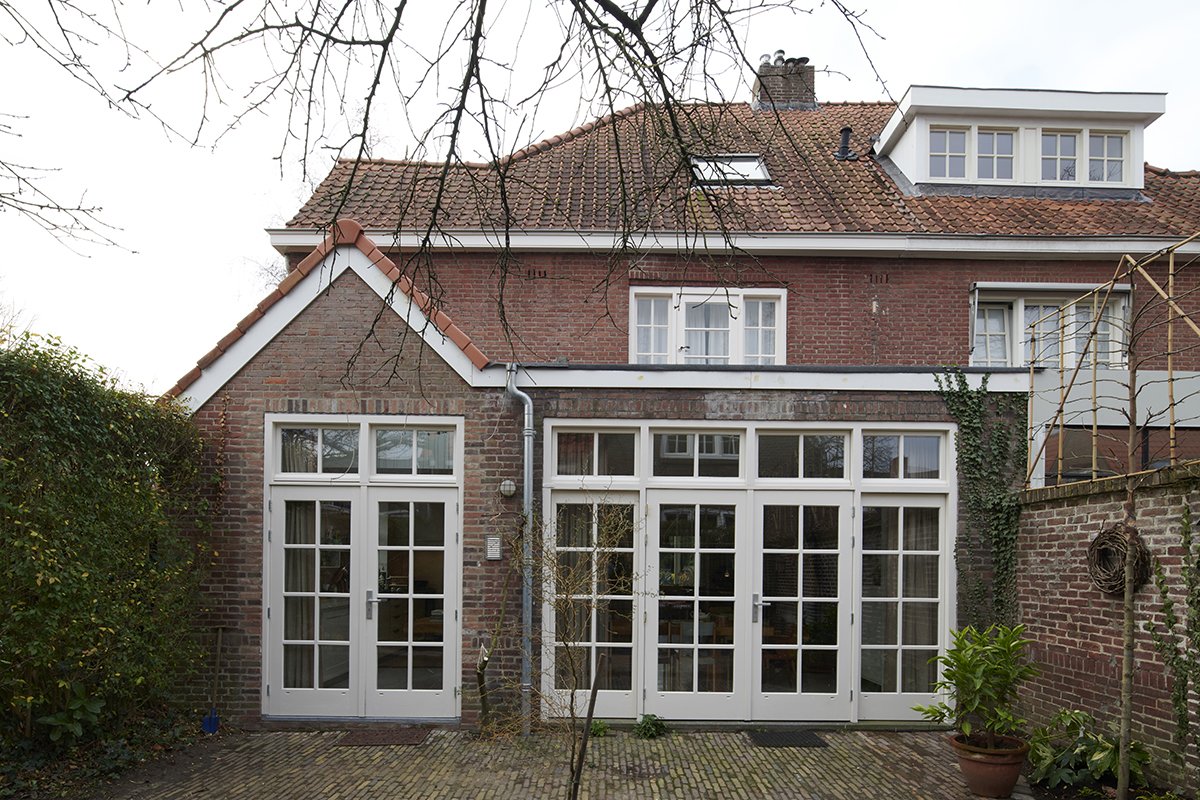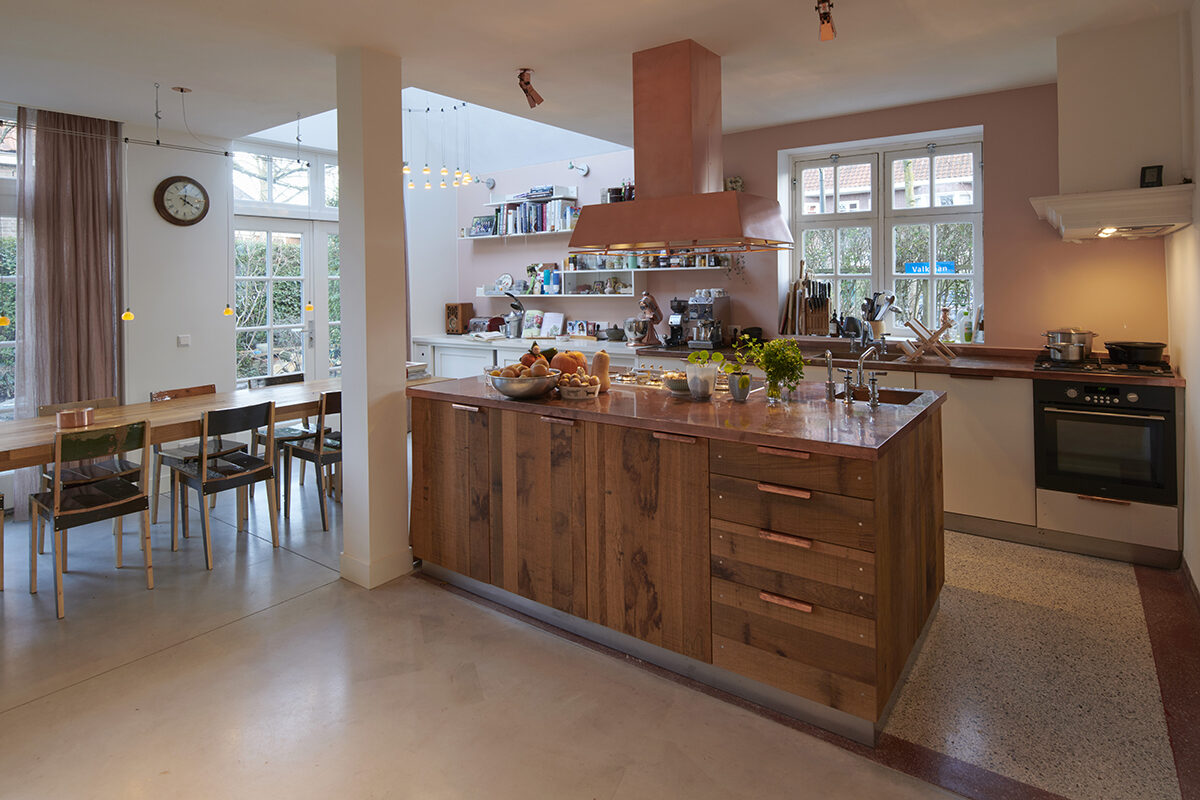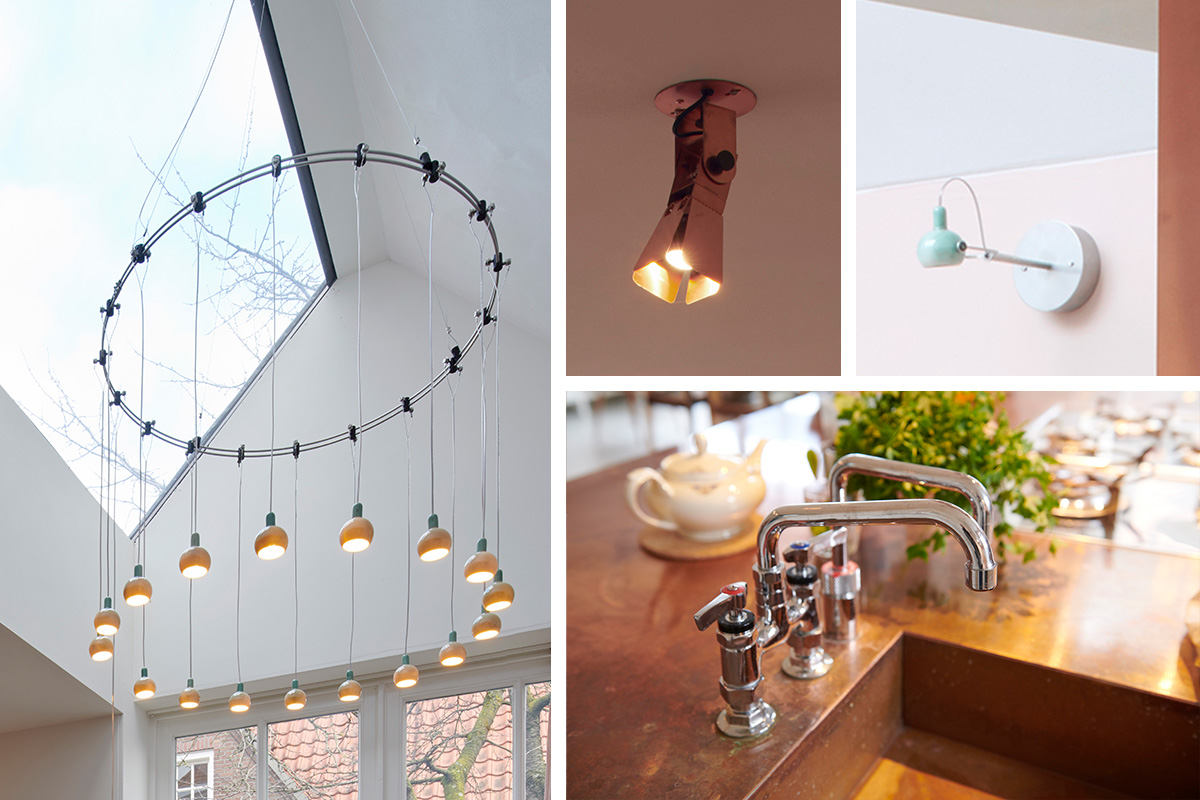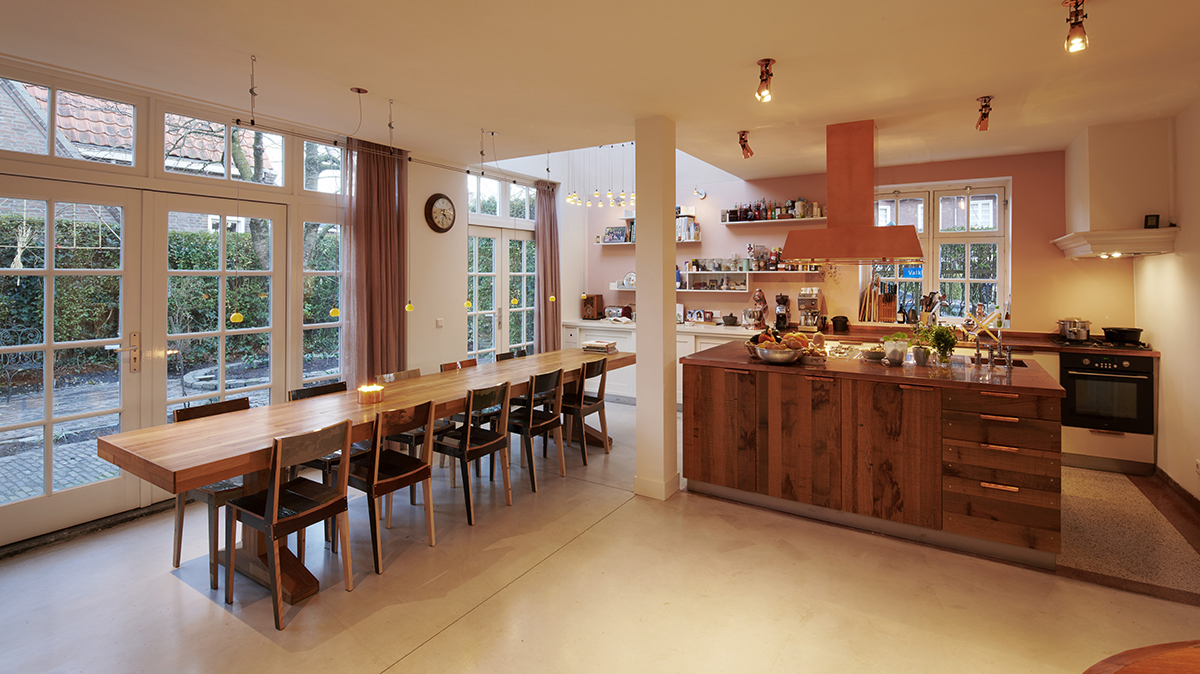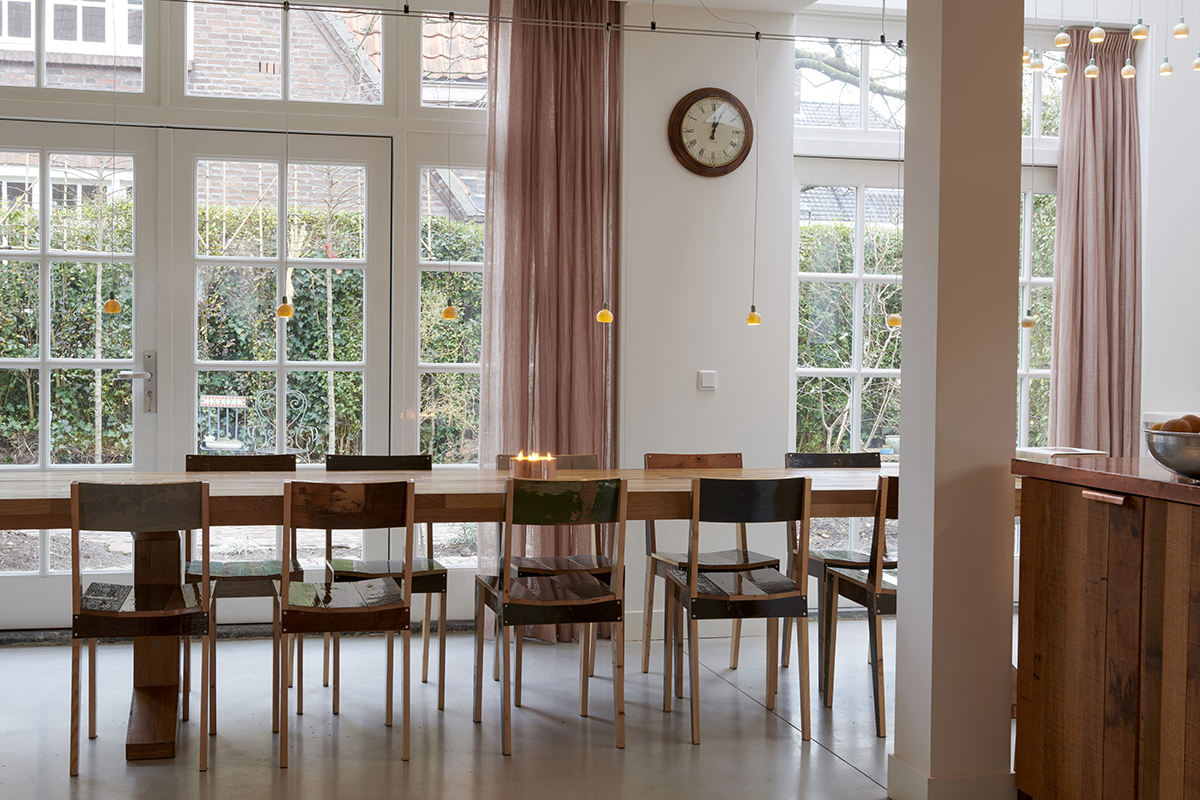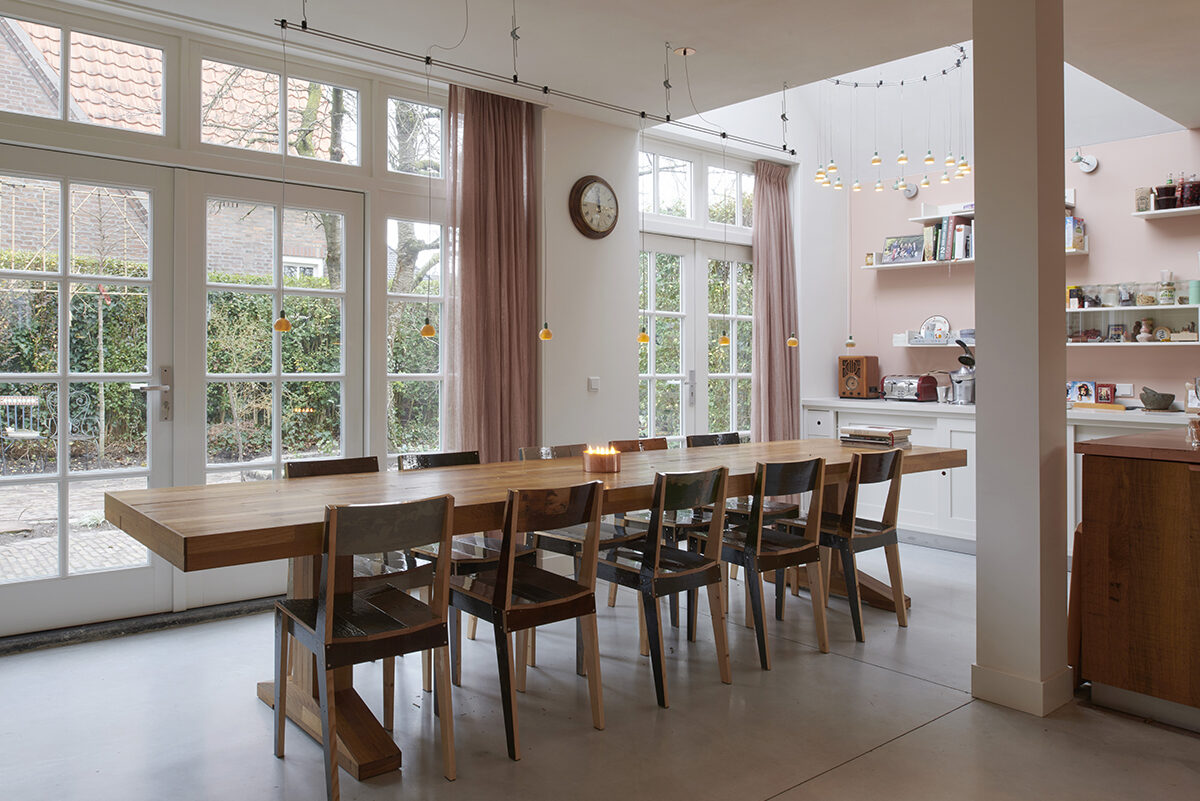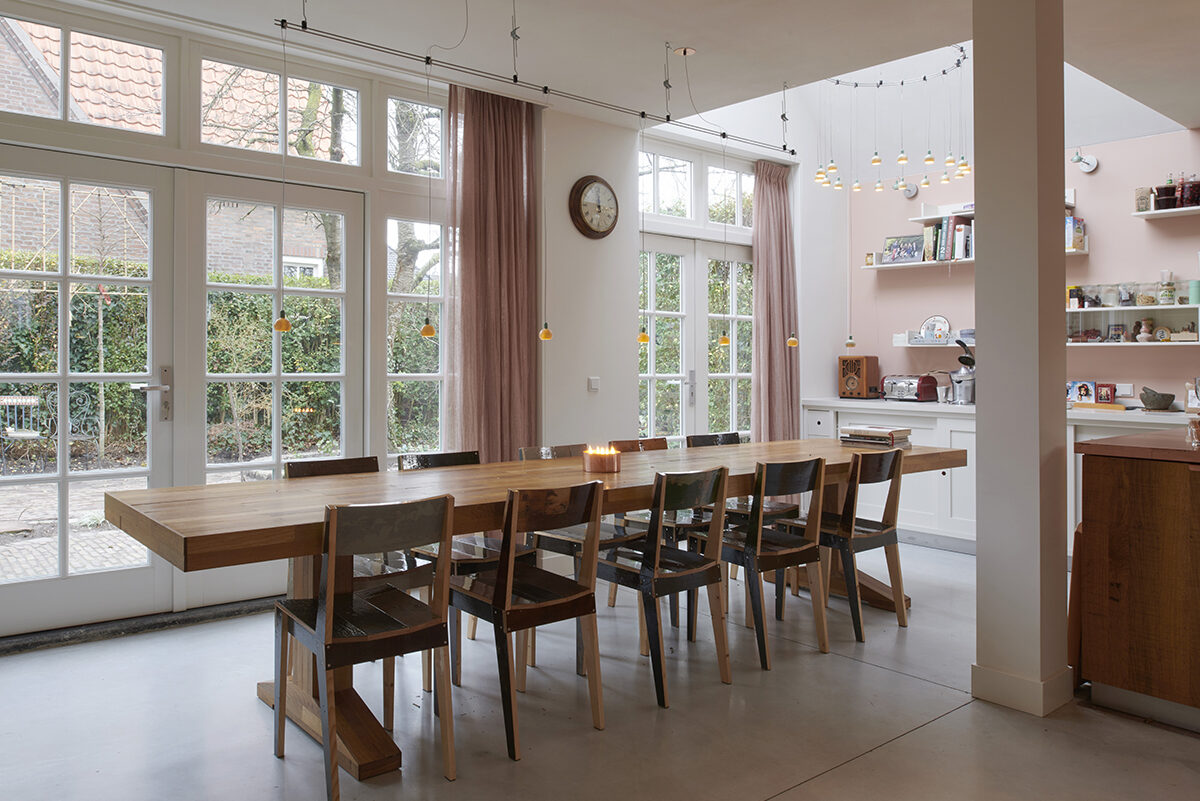
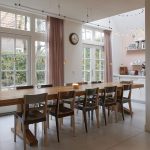



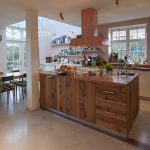
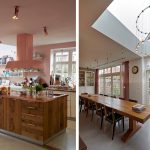
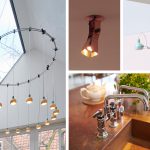
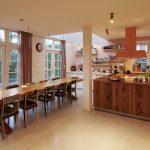
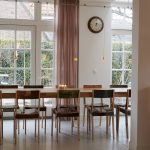
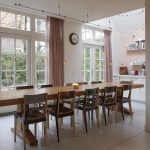
Renovation of the 1930s home
| Location | Eindhoven | ||||
|---|---|---|---|---|---|
| Type | Renovation | ||||
| Function | Living | ||||
| Fase | Ready (November 2018) | ||||
| Client | Private | ||||
| Collaborations |
| ||||
| Download | ED projectsheet Hoff NL (pdf) |
The client’s request was to renovate the ground floor and adapt it to modern living standards while ensuring better use of the various spaces. They consciously chose to continue living in the house where the children grew up and moved out because they value its atmosphere and location. Therefore, the task explicitly required the house to retain its character, creating something new with respect for the existing structure.
The necessary adjustments were twofold. On one hand, the home needed to be adapted to current living styles, where cooking and dining are social activities that occupy a central place. As a result, the garden room and the connecting room, along with the separate kitchen and utility room, were combined. On the other hand, the house did not meet modern technical standards. Walls, glass facades, and floors were not insulated, combined with an outdated heating system.
By integrating the utility room with the kitchen (replacing four walls with one column), space was created for a kitchen island and dining table in one living area. The brick wall of the utility room was fitted with a facade similar to that of the existing conservatory (which was also renewed). The facade facing the garden now spans the full width of the house. Since this side of the house is darker, we replaced the entire roof of the shed with a single glass panel. This is not visible from the street, but it allows plenty of daylight to enter inside.
The original terrazzo floor in the old kitchen was preserved, marking the cooking area. The kitchen island is positioned right at the edge of the terrazzo floor. By allowing a white lacquered cabinet in the dining area to seamlessly extend into the kitchen unit, the dining room flows into the kitchen. A detailing style was deliberately chosen that suits a 1930s house, yet remains distinctively modern in its execution. To accommodate some of the chaotic kitchen clutter that existed before the renovation, we added several shelves without a specific arrangement above the dining room cabinet.
The table is made from the oak parquet that was preserved during the demolition of the space. It goes without saying that the family now dines on wood that has been a part of their lives for so long.
